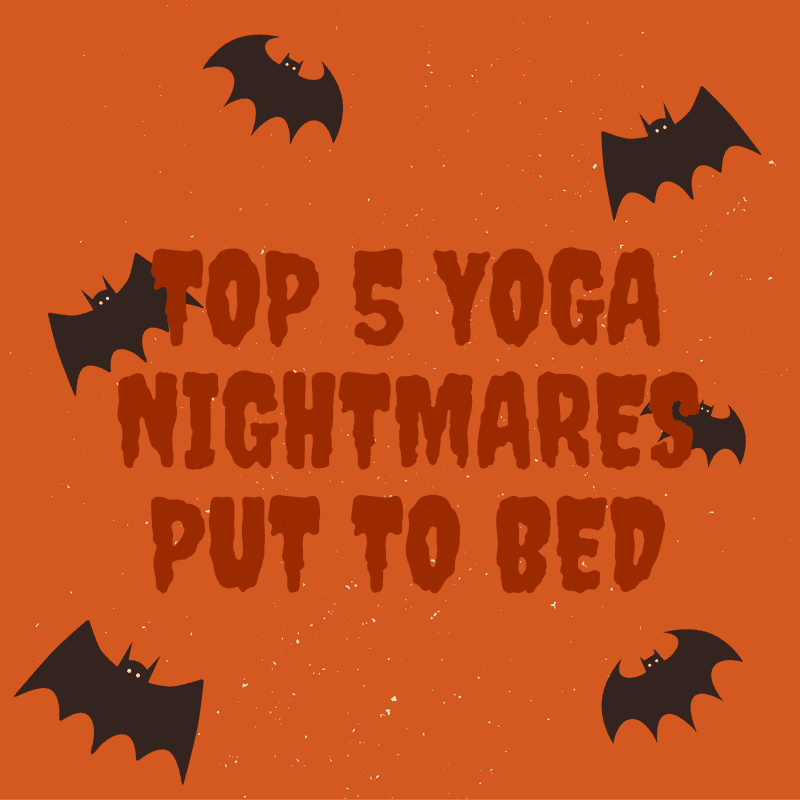Practice yoga for nightmares and night terrors to promote your good dream, why not? Read more to discover how yoga can help with nightmares and beyond.
Nightmares can be distressing and disrupt your sleep, leaving you feeling anxious and exhausted. If you’re looking for a natural way to manage nightmares, yoga can be a beneficial practice to incorporate into your routine.
By reducing stress and anxiety, promoting relaxation and better sleep, and increasing self-awareness and mindfulness, yoga can help alleviate nightmares and improve your overall well-being.
In case that you are curious want to interpret your dreams or nightmares, you can visi BDCdreams.com with a lot of useful pointers.
How yoga can help with nightmares
Reduces stress and anxiety
One of the main benefits of yoga is its ability to reduce stress and anxiety. Through the combination of physical postures, breathing exercises, and meditation techniques, yoga helps activate the body’s relaxation response, calming the nervous system and reducing the production of stress hormones.
By practicing yoga regularly, you can lower your overall stress levels, which may contribute to a decrease in nightmares.
Promotes relaxation and better sleep
Yoga promotes relaxation and better sleep by helping you unwind both physically and mentally. The gentle stretching and movements involved in yoga poses release tension in the body, allowing for a more restful sleep.
Additionally, the focus on deep breathing and mindfulness during yoga practice can quiet the mind and prepare it for a peaceful night’s rest, reducing the likelihood of nightmares.
Increases self-awareness and mindfulness
Yoga cultivates self-awareness and mindfulness, which can be beneficial in managing nightmares. By practicing yoga, you become more attuned to your body, thoughts, and emotions.
This heightened awareness allows you to recognize and address any underlying issues that may be contributing to your nightmares.
Through mindfulness techniques such as meditation and guided visualization, you can develop a greater sense of control over your thoughts and emotions, reducing the frequency and intensity of nightmares.
Yoga poses for nightmares
Incorporating specific yoga poses into your practice can help alleviate nightmares. Here are some poses that can promote relaxation and calmness:
Child’s Pose (Balasana)
Child’s Pose is a gentle resting pose that helps release tension in the back, shoulders, and neck. It promotes relaxation and can help calm the mind, making it an ideal pose to practice before bed.
Legs-Up-The-Wall Pose (Viparita Karani)
Legs-Up-The-Wall Pose is a restorative pose that allows for deep relaxation. By elevating your legs against a wall, you stimulate the relaxation response in the body and promote better circulation, helping to reduce stress and anxiety.
Corpse Pose (Savasana)
Corpse Pose is a classic relaxation pose that involves lying flat on your back with your arms and legs relaxed. It allows for complete surrender and deep relaxation, making it an excellent pose to practice before sleep to calm the mind and body.
Forward Fold (Uttanasana)
Forward Fold is a gentle forward bending pose that helps release tension in the back and hamstrings. It promotes relaxation and can help relieve anxiety, making it a beneficial pose for managing nightmares.
Reclining Bound Angle Pose (Supta Baddha Konasana)
Reclining Bound Angle Pose is a restorative pose that opens the hips and promotes relaxation. It can help release tension in the body and calm the mind, making it a useful pose for managing nightmares.
Breathing exercises for nightmares
In addition to yoga poses, incorporating specific breathing exercises into your routine can further aid in managing nightmares. Here are some breathing techniques to try:
Deep belly breathing
Deep belly breathing, also known as diaphragmatic breathing, involves breathing deeply into your belly rather than shallowly into your chest. This technique activates the body’s relaxation response and helps calm the mind, reducing the likelihood of nightmares.
Alternate nostril breathing
Alternate nostril breathing is a balancing breathing technique that involves inhaling and exhaling through one nostril at a time. This technique helps harmonize the left and right hemispheres of the brain, promoting relaxation and reducing stress and anxiety.
4-7-8 breathing
4-7-8 breathing is a simple yet effective technique for calming the mind and body. It involves inhaling for a count of 4, holding the breath for a count of 7, and exhaling for a count of 8. This technique helps regulate the breath and activate the body’s relaxation response.
Here’s a simple yoga schedule to help you sleep better and avoid nightmares:
| Day | Time Slot | Yoga Practice |
|---|---|---|
| Monday | Evening | Gentle Yoga Flow or Restorative Yoga |
| Tuesday | Evening | Yoga for Stress Relief or Yoga Nidra |
| Wednesday | Evening | Deep Stretching Yoga or Pranayama |
| Thursday | Evening | Yin Yoga or Guided Meditation |
| Friday | Evening | Relaxing Hatha Yoga or Mindfulness Yoga |
| Saturday | Evening | Bedtime Yoga Sequence or Breathwork |
| Sunday | Evening | Restorative Yoga or Body Scan Meditation |
Meditation techniques for nightmares
Meditation can be a powerful tool for managing nightmares by promoting relaxation and mindfulness. Here are some meditation techniques to incorporate into your practice:
Guided visualization
Guided visualization involves imagining peaceful and calming scenes or scenarios. By visualizing positive images, you can shift your focus away from negative thoughts and emotions, reducing the occurrence of nightmares.
Loving-kindness meditation
Loving-kindness meditation involves cultivating feelings of love, compassion, and kindness towards yourself and others. This practice can help foster a sense of safety and security, reducing anxiety and promoting better sleep.
Body scan meditation
Body scan meditation involves systematically scanning your body from head to toe, bringing awareness to each body part and releasing any tension or discomfort. This practice promotes relaxation and can help alleviate physical and mental stress, reducing the likelihood of nightmares.
Other tips for managing nightmares
In addition to incorporating yoga, breathing exercises, and meditation into your routine, here are some other tips for managing nightmares:
Establish a bedtime routine
Creating a consistent bedtime routine can signal to your body and mind that it’s time to relax and prepare for sleep. Include calming activities such as reading, taking a warm bath, or practicing gentle yoga poses to help reduce the occurrence of nightmares.
Create a calming sleep environment
Ensure your sleep environment is conducive to relaxation and restful sleep. Keep your bedroom cool, dark, and quiet, and consider using calming scents such as lavender to promote a peaceful atmosphere.
Avoid stimulating activities before bed
Engaging in stimulating activities such as watching intense movies or using electronic devices before bed can increase the likelihood of nightmares. Instead, opt for calming activities such as reading a book or practicing relaxation techniques.
Conclusion
If nightmares are disrupting your sleep and causing distress, incorporating yoga, breathing exercises, and meditation into your routine can be a natural and effective way to manage them.
By reducing stress and anxiety, promoting relaxation and better sleep, and increasing self-awareness and mindfulness, yoga can help alleviate nightmares and improve your overall well-being. Remember to consult with a healthcare professional if your nightmares persist or significantly impact your daily life.
Start your journey towards peaceful nights by incorporating these practices into your routine and enjoy the benefits they bring.
Originally posted 2023-03-28 14:03:35.









